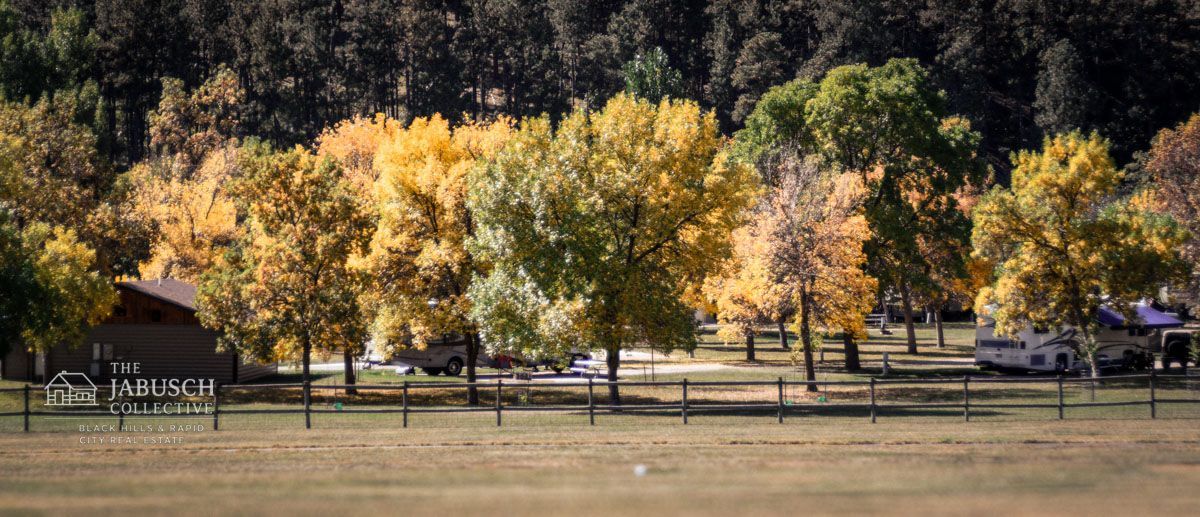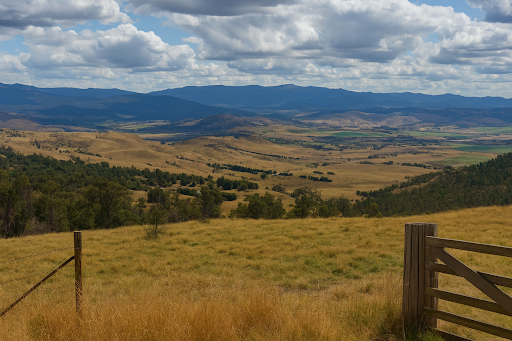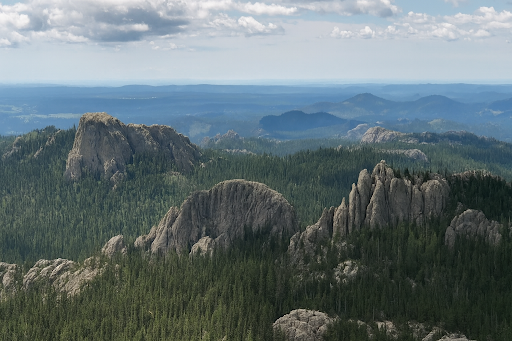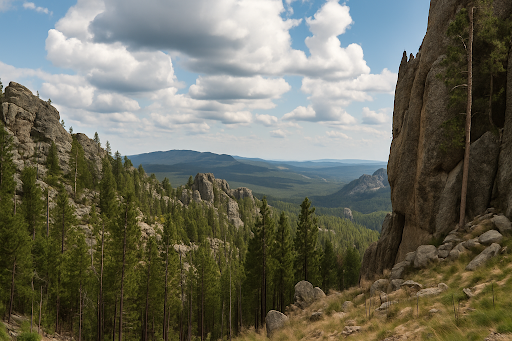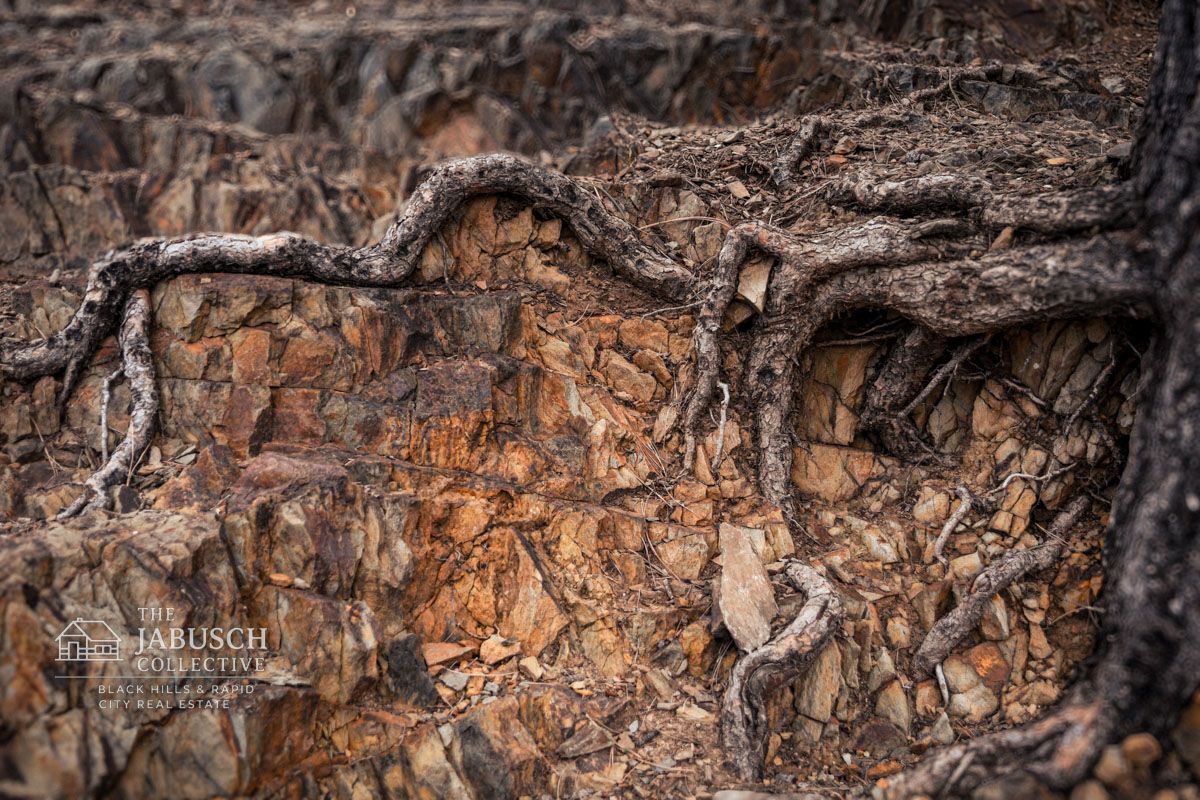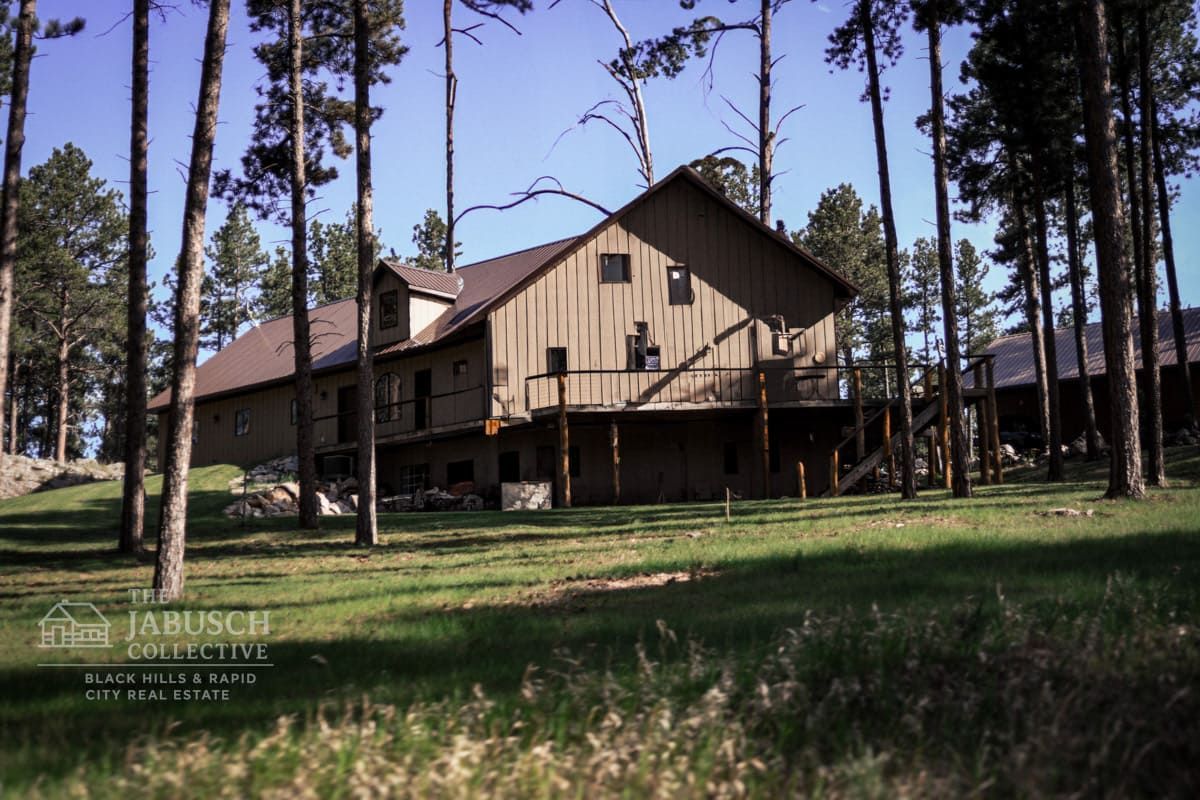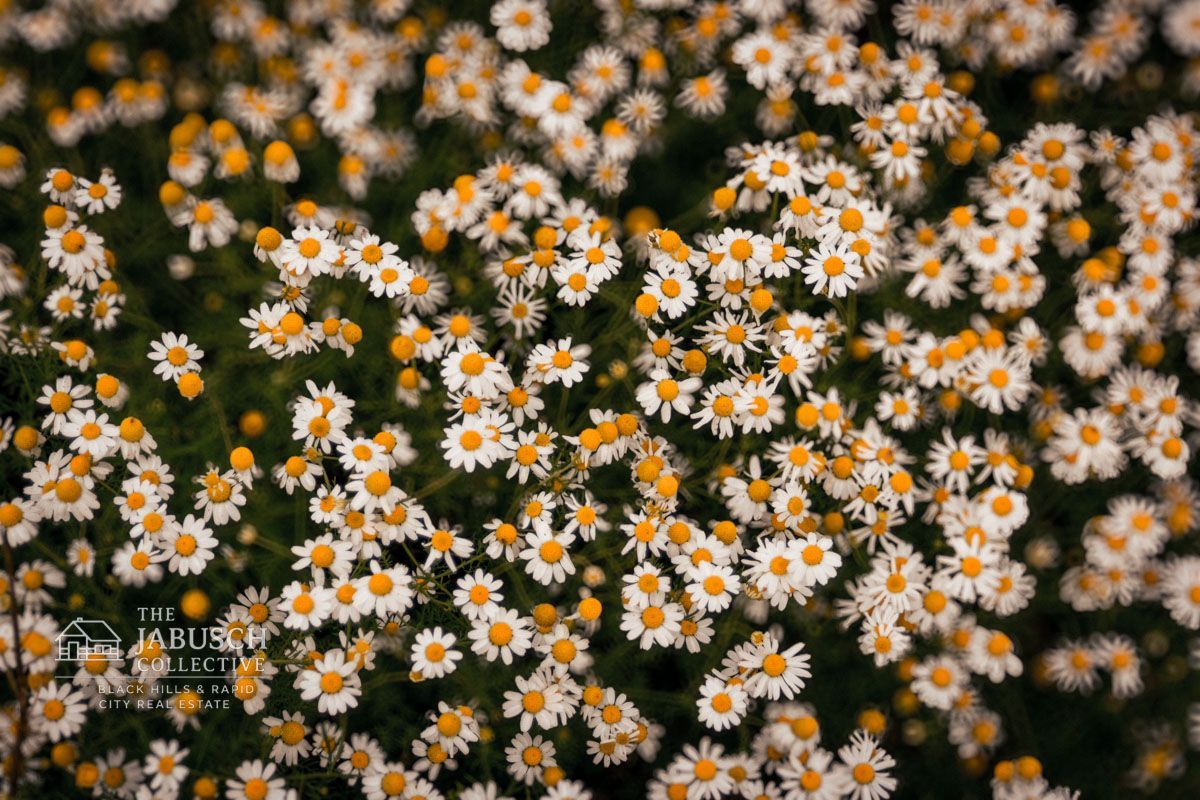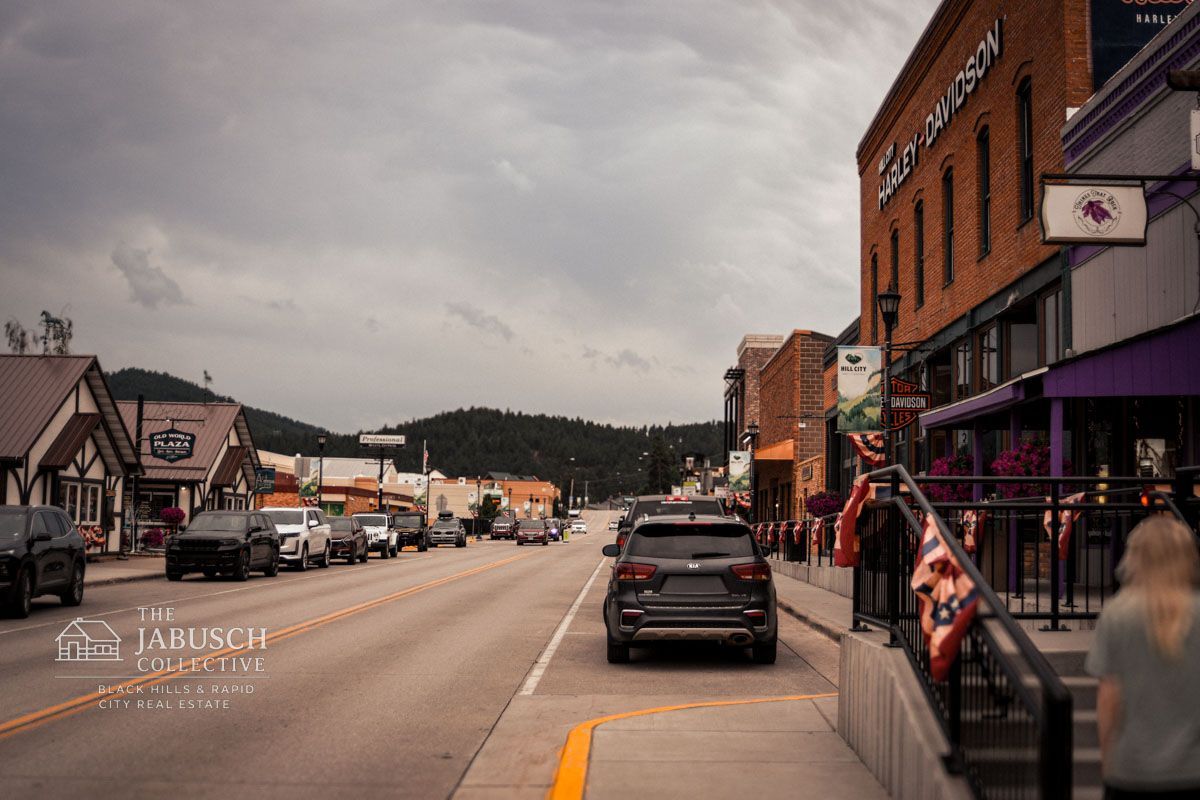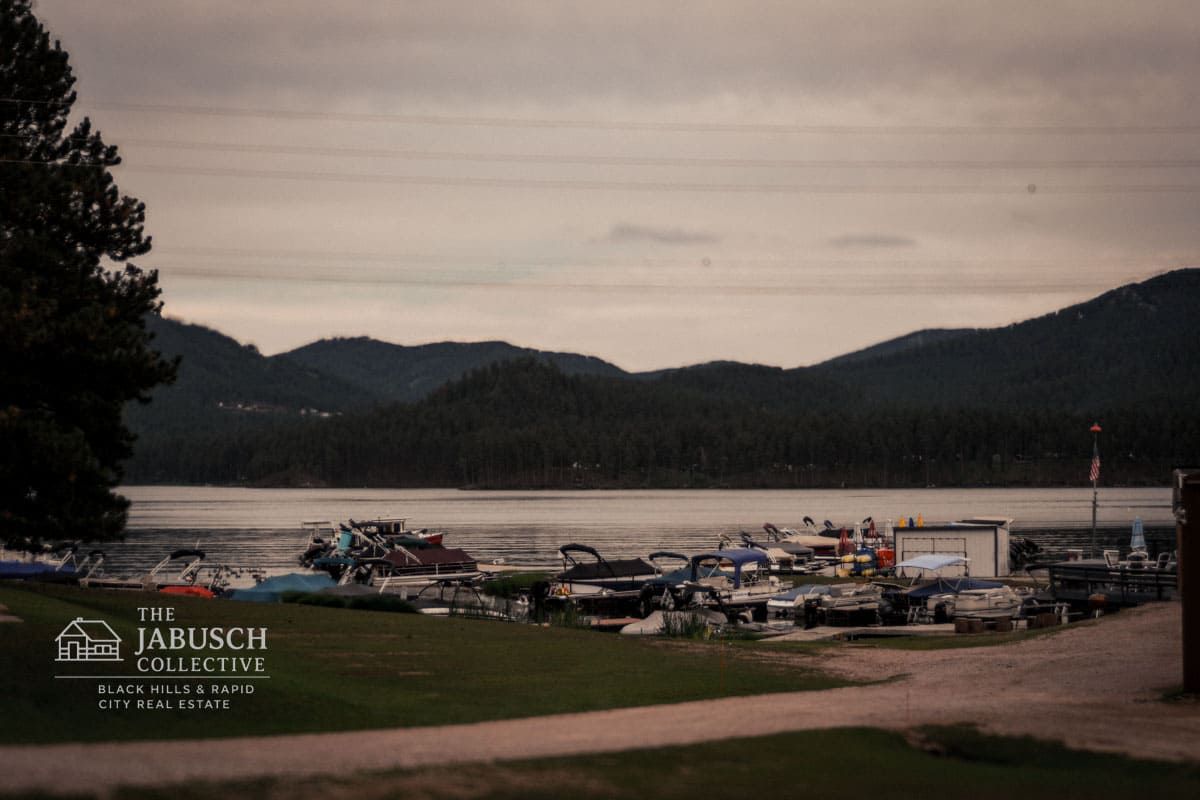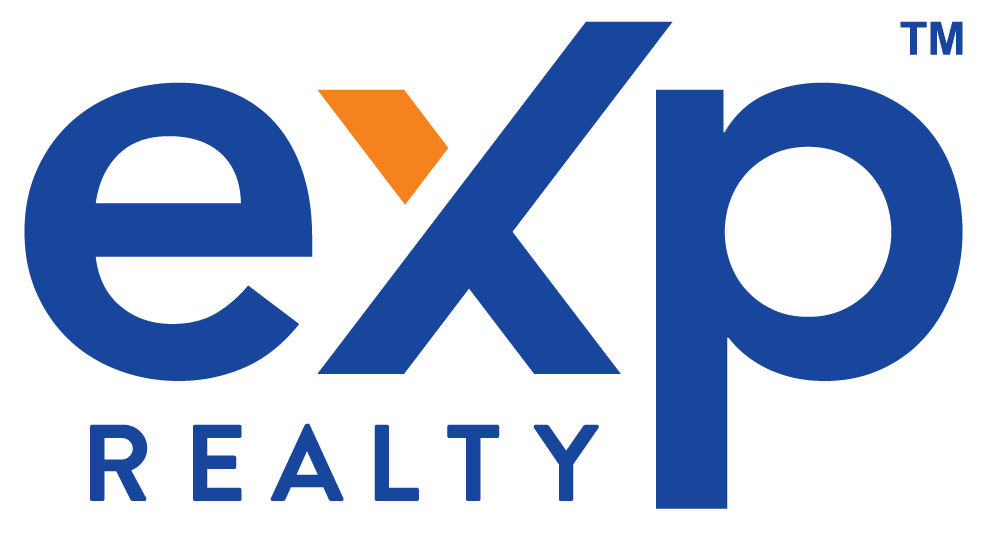TL;DR (Too Long; Didn’t Read)
Want to homestead in South Dakota? Here's what you need to know in 2 minutes:
- South Dakota is a hidden gem for off-grid living, land ownership, and building a self-sufficient lifestyle—but it takes planning and grit.
- Off-grid living is legal and feasible, particularly with the use of solar energy, well water, and composting systems. Fiber internet is available in some rural areas.
- Buying land? Understand
easements, plat maps, and zoning. Prioritize properties with existing wells/septic systems to save $15,000–$30,000.
- Zone 4b gardening is viable. Hardy veggies, herbs, and fruit trees can thrive with raised beds, greenhouses, and seasonal planning.
- Bartering and local trade still matter. You’ll find community in churches, farmers' markets, and homesteading groups.
- Wild game, chickens, goats, and hardy cattle breeds can round out your food supply. SD is one of the best states for hunters.
- Counties like Pennington, Custer, Fall River, and Lawrence offer the best combo of freedom, support, and opportunity.
- Taxes are low, and ag exemptions reduce them further—especially if you have 10–20+ acres and can show agricultural use.
- Build slowly. Start with shelter. The most successful homesteads evolve, not overnight.
You’re not just buying dirt—you’re building a legacy. And South Dakota has room for you.
Table of Contents
South Dakota Homestead & Land Buying Guide
- Why South Dakota? God’s Country for the Self-Reliant Soul
- How Big Is an Acre? Understanding Land Size and Use
- What It Takes to Live Off-Grid in South Dakota
- Permits, Septic, and Utility Considerations
- What the Plants Say: Reading Soil Through Native Wildflowers
- Living Year-Round — Access, Snow, and Seasonal Challenges
- Buying Land in South Dakota: Red Flags and Green Lights
- Resources, Financing, and Working With Local Experts
- Finding the Right Community for Your Homestead
- Building for the Long Haul — Structures, Cabins, and Modular Options
- Land Taxes and Ag Exemptions in South Dakota
- Building Community and Support in the Black Hills
- Feeding Yourself — Wild Game, Gardening, and Livestock
- Understanding Land Layouts — Plat Maps, Easements, and Unimproved Land
- How to Start a Homestead in South Dakota
- Our Stance on Homesteading — Faith, Simplicity, and Legacy
Why South Dakota?
God's Country for the Self-Reliant Soul
South Dakota isn't just a place—it's a promise—a land woven with wild prairies, sacred hills, and skies that stretch into forever. Whether you're a couple looking to build a home from the ground up, a family seeking freedom and roots, or a retiree chasing quiet purpose, the land here speaks if you know how to listen.
In this guide, we’ll walk you through exactly how to evaluate acreage, what off-grid living means in South Dakota’s unique climate, and what to expect when buying raw or semi-developed land. We’ll also break down what native plants say about your soil (yep, your wildflowers are talking), how to survive winter access, septic and permitting tips, and the real meaning behind rural listings.
Let’s get your boots dirty.
Section 1: How Big Is an Acre?
Understanding Land Size, Space, and How Much You Need to Thrive
If you’ve never stood on an acre of land, it’s easy to underestimate—or overestimate—how much space you need. Here’s how to visualize it:
- 1 acre = 43,560 sq ft (about the size of a football field without end zones)
- 5 acres = enough room for a home, small livestock setup, garden, and buffer
- 10+ acres = privacy, grazing land, or serious agricultural production
You’ll often see listings with wide variations—from 0.5-acre lots in mountain towns to sprawling 40-acre tracts in the plains. The trick is not just size, but
usable space: trees, slopes, rocky soil, and zoning can all limit what you can build or grow.
Stay tuned as we dig into:
- How to read plat maps and surveys
- Flag lots, easements, and property access
- What “unimproved” really means in South Dakota
Section 2: What It Takes to Live Off-Grid in South Dakota
Climate, Utilities, and the Myths That Keep People Away
One of the biggest misconceptions about off-grid living in South Dakota is that the environment makes it impossible. But here's the truth: our growing season is shorter, yes—but the land is strong and the people who thrive here learn how to adapt.
You don’t need to be completely disconnected from the world. Many homesteaders here utilize hybrid systems—solar power with backup generators, well water supplemented with rain catchment, composting toilets, or greywater setups alongside traditional plumbing. In some areas,
fiber internet is available, making remote work and modern convenience doable.
What you'll need to plan for:
- Heating: wood stoves, propane, solar, thermal mass
- Power: solar arrays, wind turbines, battery banks
- Water: wells, cisterns, filtration systems
- Waste: composting, septic
South Dakota welcomes self-reliance—but it requires planning, grit, and a respect for nature’s pace.
Section 3: Permits, Septic, and Utility Considerations
What You Need to Know Before Breaking Ground
Before you build or even park a camper, you’ll need to get familiar with local permitting laws. In South Dakota, rural counties often have looser regulations, but don’t assume it’s a free-for-all.
What to research:
- County zoning ordinances
- Floodplain status (you’ll need FEMA maps)
- Septic permitting and soil percolation test requirements
- Electrical access and rural hookup costs
Septic systems in particular are a significant cost hurdle. On raw land, it’s not uncommon to pay $15,000–$25,000 to install a new one. Some areas won’t approve a building permit until a septic system is planned and tested.
Pro Tip:
Properties with old mobile homes or cabins may already have septic, electric, and water on site—even if the structure is uninhabitable. These are gold mines for budget-minded buyers.
Also expect delays. Rural permitting offices are small and understaffed. It’s not unusual to wait several weeks for approval or inspection.
The process may test your patience—but it’s worth it. With the right strategy and a bit of perseverance, you’ll be one step closer to building the homestead you’ve always dreamed of.
Section 4: What the Plants Say
How Native Wildflowers Reveal the Health of Your Soil
Before you ever test your dirt, your land may already be telling you a story—through the wildflowers growing on it.
South Dakota’s native plants are more than beautiful; they’re indicators of
soil composition,
moisture levels, and
ecological health. Knowing what grows naturally can help you decide what to plant, where to graze, and whether you’ll be fighting an uphill battle with your garden or pasture.
Here’s a quick breakdown of what some of the most common native wildflowers and prairie plants suggest:
- Yarrow & Fleabane – Found in disturbed soils, but thrive in well-draining areas. Hardy, adaptable, and a good sign for gardening.
- Prairie Smoke & Pasqueflower – These low-growing perennials indicate rich, undisturbed prairie soil, making them excellent indicators of a healthy native ecosystem.
- Goldenrod & Gumweed – Often pop up in transitional zones. They indicate open sun and relatively dry conditions.
- Purple Prairie Clover & Black-Eyed Susan – Beloved by pollinators, these show a balanced, loamy soil with good fertility.
- Fireweed & Silvery Lupine – Often appear after disturbances (such as fire or logging). They suggest renewal, not degradation.
- Thistle & Dogbane – These often indicate
compacted or low-fertility soils. Not always bad news, but it’s nature’s nudge that the area may need rejuvenation.
- Alfalfa, Sweet Clover, Red Clover – Introduced forage species that thrive in fertile soil. Seeing these is a good sign if you plan to keep animals.
- Sunflowers – Naturally draw up nutrients from deep in the soil. If wild sunflowers grow tall on your property, you’ve likely got
decent drainage and access to minerals.
Pro Tip: Want to test your land
before hiring a soil specialist? Walk it. Take pictures of what grows. Cross-reference with our [Black Hills Wildflower Field Journal] blog for insight—or bring in a local botanist for a consult.
Learning to read your landscape is a huge advantage. The more you understand the native vegetation, the easier it is to work
with the land rather than against it.
Section 5: Living Year-Round — Access, Snow, and Seasonal Challenges
What to Expect Through All Four Seasons
South Dakota’s beauty shifts dramatically through the seasons, and so do its challenges. Year-round living on rural land—especially in the Black Hills—means preparing for snow, wind, and isolation.
Winter Considerations:
- Snow Removal: Private roads = your responsibility. If access isn’t plowed, you’re stuck.
- Driveway Design: Long drives may need turnouts for plows or all-wheel drive vehicles.
- Power Backups: Ice storms and heavy snow can knock out grid power—have backup heat and energy sources.
Other Seasonal Notes:
- Spring = mud and thaw, ideal for testing your site’s drainage
- Summer = fire risk in prairie areas—maintain a defensible perimeter
- Fall = prepare firewood, check systems, winterize garden & pipes
Pro Tip: Visit the area in all four seasons before committing, or ask neighbors and locals about their experiences with winter access.
Yes, it takes effort—but the flip side is peace, quiet, and a life aligned with nature’s rhythm. If you crave resilience and solitude, you’ll thrive here year-round.
Section 6: Buying Land in South Dakota: What to Look For
Insider Tips, Red Flags, and How to Know It’s the Right Property
So, you’re scrolling listings and dreaming about acres of your own. But how do you separate a good deal from a money pit? South Dakota's rural land market is full of promise—but it’s also full of nuance.
Here’s what to keep your eye on:
Signs of a Promising Property:
- Existing Utilities: Water, electric, or especially
a functioning septic system can save you $10k–$30k.
- Access: County-maintained roads or all-weather driveways = peace of mind in winter.
- Healthy Vegetation: Native wildflowers and grasses indicate rich, stable soil (refer back to our wildflower section!).
- South-facing slopes: These offer ideal sun exposure for gardens, solar panels, and passive heating.
- Old Structures: Even if it looks rough, a teardown with existing hookups is worth its weight in gold.
Red Flags That Could Cost You:
- No recorded access (also known as landlocked): Without a deeded easement, you may be at a disadvantage.
- “Seasonal” roads: Translation—impassable in winter or after heavy rains.
- Heavily wooded lots in fire-prone areas: You’ll need a defensible perimeter and possible insurance complications.
- Too-good-to-be-true pricing: Often means steep slopes, floodplain issues, or zero utilities.
- Abandoned wells or unmarked septic systems: May need costly removal or environmental remediation.
Bonus Tips:
- Check floodplain and soil maps: These are available
free of charge through FEMA and the USDA NRCS.
- Use Google Earth + County GIS tools: See terrain, access routes, neighboring uses, and elevation.
- Call the County Planning Department: They’ll tell you zoning, building requirements, and if you can have animals.
Don’t go into land shopping blind. With a bit of research—and
the right people in your corner (The Jabusch Collective)—you’ll avoid costly surprises and secure a property that supports your dream.
Section 7: Building a Homestead That Grows With You
Start Small, Think Long-Term, and Let the Land Lead
Homesteading doesn’t have to mean going all in from day one. The most successful off-grid and semi-grid homesteads grow
in stages.
Start with what you can manage:
- A garden bed or two
- Rain catchment for your RV or cabin
- Chickens or rabbits before goats or cattle
- A root cellar before a full greenhouse
Think about
modular living: sheds that become workshops, tiny homes that later serve as guest quarters, barns that double as garages.
Pro Tip: Plan your layout early. Even if you don’t build everything at once, knowing where your home, garden, barn, and water access will go can prevent expensive do-overs.
And above all—listen to your body and your land. Some seasons you’ll build. Some of you’ll rest. It’s okay to take it slow.
Remember: homesteading is not a project. It’s a relationship—one rooted in faith, stewardship, and the joy of watching something grow.
Section 8: Resources, Financing, and Working With Local Experts
Get the Help You Need Without Losing the Vision
Homesteading starts with a dream—but it’s built with paperwork, persistence, and good partners.
State and Federal Resources
- USDA Rural Development – Offers grants and loans for rural homebuyers, sustainable agriculture, and energy-efficient upgrades.
- FSA Beginning Farmer Programs – Ideal for those with ag backgrounds or long-term plans to farm.
- NRCS Conservation Support – For soil improvement, water management, and native habitat protection.
- Veteran Homesteader Incentives – Ask about specific SD veteran programs if applicable.
Financing Options
- Conventional Land Loans – Most banks offer land loans, but they typically require a down payment of 20–50%.
- Construction Loans – For those building on raw land, combining land + structure into one loan.
- FHA or VA-Backed Loans – May apply if there’s an existing home on the land.
Pro Tip: Some lenders are unfamiliar with off-grid setups. Be prepared to explain your systems and demonstrate that they are sustainable, not risky.
Why a Local Expert Changes Everything
Navigating land deals in South Dakota is not for the faint of heart. Permits, zoning laws, water rights, old wells, mineral rights—these things matter, and a local guide can make or break your outcome.
That’s where
Morghan Jabusch comes in.
As a real estate expert rooted in the Black Hills, Morghan doesn’t just find you land—he helps you find the
right land.
He’ll help you:
- Avoid costly red flags and permitting issues
- Understand how your dream lifestyle fits local laws
- Tap into community networks to build support, rentals, or temp housing
Whether you're dreaming of a prairie escape, a tucked-away cabin, or a multi-acre retreat, Morghan brings the knowledge, connections, and integrity to help you get there—on your terms.
Reach out today for honest insight, zero fluff, and a partner who gets what you’re trying to build!
Section 9: Finding the Right Community for Your Homestead
Why Location Is More Than Coordinates on a Map
When you're chasing the homestead dream, it's easy to focus only on the land itself. But choosing
where to plant your roots in South Dakota is just as important as how.
From the high pines of
Custer County to the windswept prairie edges of
Fall River, each region offers a unique lifestyle, pace, and set of resources. And not every county is created equal when it comes to zoning, access, or community support.
What to Look For in a Rural Community
- Supportive County Offices: For example, Pennington and Meade counties have clear zoning maps online and are generally responsive to new landowners.
- Local Co-ops and Feed Stores: These are your lifeline for animal supplies, seeds, and advice. Rapid City has several within driving distance, while towns like
Hermosa,
Hill City, and
Hot Springs have more tight-knit, locally run options.
- Like-Minded Neighbors: Are your future neighbors ranchers, retirees, or full-time off-gridders? That matters more than you’d think—especially when winter hits.
- Access to Farmers' Markets & Local Food Networks: Black Hills farmers' markets (such as those in
Spearfish, Rapid City, and Sturgis) are excellent places to connect and learn the ropes.
Watch Out For:
- Counties with inconsistent enforcement: Some counties may appear to be lax, but can quickly shift priorities if new leadership is elected. Always get permits in writing.
- Extremely remote parcels: We’re all for privacy—but 90 minutes from the nearest gas station in
Harding County isn’t for the faint of heart.
Pro Tip from the Locals
Try visiting several towns before deciding. Spend a weekend at a B&B in Buffalo Gap, or take a drive through New Underwood during a community event. You’ll learn more from a local café chat than hours of Google searches.
Section 10: Building for the Long Haul — Structures, Cabins, and Modular Options
What to Put on Your Land, and How to Make It Last
Once you’ve found the perfect piece of South Dakota soil, the next big question is:
what kind of home will work here? Between our wild winters, high winds, and rural permitting quirks, not every structure is a good fit—and some are downright money pits.
Luckily, South Dakota's counties are friendlier than most when it comes to creative builds—if you know how to work with (not against) them.
Popular Structure Types for Homesteaders
- Stick-Built Homes: Classic and mortgage-friendly,
great for areas like
Hill City and
Custer, where utilities are already in place.
- Barndominiums: Durable, cost-effective, and trending hard in places like
Pennington County and
Custer County.
- Modular & Prefab Cabins: Quick to install and often eligible for FHA loans. We’ve seen many homes go up near
Hill City and
Hermosa, offering gorgeous views and low maintenance.
- Custom Cabins: Especially common in
Custer State Park-adjacent areas, where smaller square footage means lower property taxes and cozy winter living.
What About Alternative Builds?
Earthships, yurts, and off-grid tiny homes can work—but you’ll need to get clever with code compliance. Some counties (like
Oglala Lakota) are less restrictive, while others (like
Pennington County) will require engineered plans for non-standard structures.
Pro Tip: Consult with your building inspector
before purchasing materials. It’ll save you heartbreak—and thousands of dollars.
Cost Considerations
- Well & Septic: $30–50k combined on raw land, unless you're near a developed grid.
- Foundation: Slab-on-grade is popular in areas prone to shifting soils (like parts of
Fall River County)
- Insulation & HVAC: Critical in windy plains and foothills—don't skimp. Spray foam pays off.
Sustainability Tips
- Use locally sourced lumber from mills near
Deadwood or
Lead.
- Consider installing south-facing windows to harness passive solar heat in winter.r
- Invest in a wood stove—many homesteaders in
the Black Hills still use them as their primary heat source.
Build Slow, Build Smart
Whether you’re hiring out or going full DIY, remember that winter builds can be tough in this climate. Many local builders in
Rapid City's
surrounding areas are booked out months in advance—so plan early and build in stages if needed.
Your homestead doesn’t need to be finished in a year. Some of the most beloved homes in South Dakota were built piece by piece, season by season, with patience and purpose.
Start with shelter. Then build the dream around it.
Section 11: What to Know About South Dakota Land Taxes and Exemptions
Why It’s More Affordable Than You Think
South Dakota is consistently ranked among the most tax-friendly states in the country—and that applies to landowners as well.
Here’s what makes SD special:
Low Property Taxes:
- South Dakota’s average effective property tax rate is around
1.1%
- Rural counties (like Haakon, Jones, and Perkins) tend to be even lower
Ag Status and Tax Breaks:
- Land used for grazing, crops, or timber may qualify for
agricultural use valuation, which drastically reduces your tax bill
- You usually need 20+ acres or demonstrated ag income—check with your county assessor
Homestead Exemption:
- Primary residences may qualify for protection from creditors
- Some counties offer
elderly and disabled exemptions, too
No State Income Tax:
- This one’s huge—if you run a small business or work remotely, your income stays in your pocket
Pro Tip: Even if your property isn’t ag-exempt yet, planting trees, maintaining native grassland, or leasing part of your land for haying may count toward qualification.
Talk to your local tax assessor
before you close on the land—especially in places like Bennett or Gregory County, where ag land is common. You might be sitting on a lower tax bill than you think.
Section 12: Building Community and Finding Support in the Black Hills Region
Because Going Off-Grid Doesn’t Mean Going It Alone
One of the most overlooked parts of off-grid or rural life is the need for connection. Isolation may sound peaceful—but long-term success in homesteading, land stewardship, and rural living often comes from knowing your neighbors, participating in your region, and building a web of mutual support. South Dakota’s off-grid communities thrive not because of isolation, but because of the strong roots they grow together.
Homesteading Groups, Meetups, and Learning Opportunities
South Dakota is home to a surprisingly vibrant off-grid and homesteading community. In counties like
Pennington,
Custer,
Lawrence, and
Fall River, you’ll find groups who are eager to share knowledge and lend a hand.
Where to Start:
- Pennington County Homestead Exchange on Facebook – barter goods, ask questions, and find like-minded folks
- Fall River County Extension Office – offers soil testing, regional planting guides, and pest support
- Custer County Fairgrounds – seasonal events, livestock shows, and hands-on homestead education
- South Dakota State University (SDSU) Extension – a statewide resource with county-specific programs and advice
Joining these groups not only helps you avoid common mistakes but also connects you with others who’ve walked the road before you.
Bartering, Skill-Sharing, and the Power of Local Trade
In communities across
Meade County,
Box Elder,
Hermosa, and the outskirts of
Spearfish, the old ways are alive and well. Bartering is a deeply respected method of exchange. Think: eggs for firewood, minor engine repairs for homemade soap, or milled lumber for canned goods.
Popular Barter Items:
- Raw dairy products
- Hand tools or equipment use
- Garden produce
- Canning, baking, or meat processing
- Fence building or mechanical skills
Pro Tip: Think of bartering as a form of currency that conveys respect. When you bring a skill to the table, you gain trust—and potentially, lifelong allies.
Churches, Farmers Markets, and Regional Ties
Spiritual and agricultural life are intertwined in the Black Hills. Churches aren’t just places of worship; they’re community centers. In
Keystone,
Hot Springs,
Hill City, and
Belle Fourche, you’ll find tight-knit faith communities that also host food drives, volunteer groups, and seasonal fairs.
Farmer’s markets and local food co-ops are also key to finding support:
- Black Hills Farmers Market (Rapid City): One of the region’s largest, with produce, meats, and handmade goods
- Belle Fourche Country Market: Features locally grown food, garden starts, and artisan crafts
- West River Local Foods Co-op: A cooperative effort that supports producers and buyers alike
Get to know your vendors. Many of them have decades of experience and are more than willing to share tips—or seedlings.
Why It Matters
Off-grid living isn’t about running from the world—it’s about redefining your connection to it. In the Black Hills, that connection runs deep. Whether you’re in
Nemo,
Hill City, or a remote parcel in
Oglala Lakota County, your ability to thrive is directly tied to the community you plant yourself in.
You’re not just building a homestead—you’re building a legacy: one relationship, one neighbor, and one shared harvest at a time.
Section 13: Feeding Yourself — Wild Game, Gardens, and Livestock in South Dakota
Because Self-Sufficiency is the Heart of Homesteading
In South Dakota’s rugged terrain and fertile plains, the balance of wild game, resilient soil, and zone 4b climate makes it entirely possible to live off the land. Whether you're hunting, gardening, or raising livestock, this state has the natural resources to support a self-sufficient lifestyle
.
Wild Game and Hunting Land in South Dakota
From deer and turkey to pheasant and elk, South Dakota is a hunter’s haven. The state is nationally recognized for its
pheasant hunting, with vast stretches of land drawing seasoned hunters year after year.
- Whitetail and Mule Deer are commonly found across the state
- Elk permits are highly sought after—apply early!
- Turkey thrives in wooded areas and river valleys, especially in spring
- Public hunting land is abundant, and many private landowners welcome managed hunting agreements
Hunting here isn’t just a pastime—it’s sustenance. Many off-grid families rely on wild game for a primary protein source. Stay updated with
South Dakota Game, Fish & Parks regulations, and consider investing in a deep freeze or smoker for preservation.
Gardening in Zone 4b, South Dakota
It’s a myth that nothing grows here—Zone 4b is cold, yes, but also full of potential. With the right timing and tools, you can grow more than you think.
Best practices for zone 4b gardening:
- Start seeds indoors or in a greenhouse as early as
late February or March
- Transplant after the last frost—usually
mid to late May
- Use cold frames, raised beds, and row covers to extend the season
Top crops that thrive in Zone 4b:
- Root vegetables: carrots, beets, radishes, turnips
- Hardy greens: kale, spinach, collards
- Squash, peas, potatoes, bush beans, cabbage
- Herbs like thyme, sage, dill, and chives
Native wildflowers and plants—like
goldenrod,
lupine, and
yarrow—can enrich your soil and attract essential pollinators.
Best Livestock for Cold Climates
South Dakota’s winters demand hardy breeds and smart infrastructure. Choosing the right livestock ensures productivity and survival when temperatures dip.
Top cold-hardy livestock breeds:
- Chickens: Rhode Island Red, Buff Orpington, Australorp, Brahma (great winter layers with light)
- Cattle: Highland, Hereford, Angus — resilient to snow and wind
- Goats: Kiko and Boer crosses do well with proper winter shelter
- Pigs: Tamworth and Berkshire handle cold better than most
- Ducks and Geese: Surprisingly hardy and efficient for eggs and meat
Winter livestock tips:
- Build wind blocks and insulated shelters
- Use heated waterers or insulated troughs
- Create deep bedding systems for added warmth and compost
With preparation, intentional choices, and a commitment to working with the climate instead of against it, feeding yourself from your land in South Dakota is not only feasible—it’s deeply satisfying.
Section 14: Understanding Land Layouts — Plat Maps, Surveys, and "Unimproved" Land
Because Reading the Land is as Important as Owning It
When buying rural property, understanding how to read a plat map, interpret a survey, or decode the term "unimproved land" can save you from serious setbacks. These elements shape everything from legal access to utility placement to the design and construction of your home.
How to Read Plat Maps and Property Surveys
Plat maps are drawn by land surveyors and filed with the county. These maps show how land is divided into lots, blocks, and parcels, and include essential data such as:
- Parcel boundaries and dimensions: You'll see the shape and size of the property, usually in feet or acres
- Roads and public access points
- Right-of-way easements: These may permit utilities or other property owners to cross your land
- Natural features: Streams, hills, wooded areas, and more
Property surveys are even more specific. They are legal documents that show the precise corners and lines of a parcel based on on-site measurements. If you're buying land, especially acreage, a
current survey is essential. It verifies boundaries and reveals any potential encroachments or access issues.
Flag Lots, Easements, and Access Considerations
Flag lots are parcels shaped like a flag, with a long, narrow access strip leading to a broader portion of land. They’re great for privacy and can be more affordable, but you’ll need to consider:
- How driveways, fencing, and utilities will be installed
- Whether the access road is legally deeded or only verbal/shared
Easements are one of the most overlooked (and misunderstood) factors. Types include:
- Utility easements: Allow utility companies to run power, water, or gas
- Ingress/egress easements: Permit access to landlocked properties
- Shared driveways or private roads: Common in rural subdivisions
Always confirm easements before closing. Even a slight restriction could derail building plans or delay your timeline.
No legal access = red flag. If there's no deeded road or recorded easement, obtaining a mortgage or building permit may be impossible until the issue is resolved.
What Does "Unimproved Land" Really Mean in South Dakota?
In real estate listings,
"unimproved" land refers to property without infrastructure or development. This could include:
- No
well, septic, or electricity
- No
road, driveway, or culvert
- No
clearing or excavation
It often appears cheaper, but comes with added costs and time.
That said, there are
key benefits:
- Flexibility to design your homestead from scratch
- Fewer restrictions on development or zoning in many counties
- Lower initial investment if you’re building gradually
Knowing how to evaluate land, access, and improvements—or lack thereof—will put you ahead of the curve as a homesteader or investor. If you’re unsure what you’re looking at, Morghan can walk you through the survey and identify potential challenges long before they become problems.
Section 15: How to Start a Homestead in South Dakota
Your First Steps Toward Freedom and Self-Sufficiency
Whether you dream of a sprawling ranch or
a cozy off-grid cabin tucked into the Black Hills, starting a homestead in South Dakota is more attainable than many people realize. The key is knowing where to look, what to ask, and how to plan.
Choosing the Right County for Your Homestead
Some counties in South Dakota are especially popular among homesteaders due to their combination of affordability, zoning flexibility, and access to natural resources. Here are some standout options:
- Fall River County – Known for its warmer microclimate and natural hot springs. Great for early planting and mild winters.
- Pennington County – Rural areas offer a sense of freedom while providing proximity to amenities in Rapid City.
- Custer County – Deep agricultural roots, plenty of pastureland, and local support for small farmers.
- Meade County – Easier access to larger parcels, lower competition for land.
- Lawrence County – Higher elevations and stunning views; suitable for privacy-focused homesteaders.
Look for land with proven agricultural potential, consider elevation and water availability, and research zoning codes on each county’s official website regularly.
How to Legally Live Off-Grid in South Dakota
Living off-grid is entirely legal in South Dakota, and many individuals choose this path for the sake of privacy, independence, and sustainability. To make your setup legal and functional:
- Water: Wells require state permitting. When buying land with a well, test the water quality and ensure that permitting is up to date.
- Waste: Septic systems must be approved and inspected. Composting toilets are allowed in some counties but often require a greywater drainage system.
- Power: Solar, wind, and generator power are all viable off-grid solutions. In some counties, even off-grid systems must be inspected for safety.
- Residency: You’ll need a legal 911 address, even if you reside on remote land. This ensures emergency response and mail delivery.
Searching terms like
"how to live off grid legally SD" and checking with your local planning and zoning office will help you stay compliant.
Ag Exempt Land: Property Tax Advantages
Purchasing
an exempt land in South Dakota is one of the best financial moves you can make for your homestead. An agricultural exemption can significantly reduce your property taxes if you meet specific criteria:
- Typically requires
10–20+ acres, depending on the county
- Demonstrated ag use (grazing, crops, bees, timber, etc.)
- Filing annual ag declaration paperwork
This exemption is particularly beneficial for part-time farmers and small-scale homesteaders just starting out.
Land With Well and Septic in the Black Hills
If you’re looking to avoid the $15,000–$30,000 cost of installing new utilities, target
land with a well and septic in the Black Hills. Here’s how:
- Search real estate listings using keywords like
"well and septic" or
"utilities in place"
- Look for parcels that once housed mobile homes or older cabins—they often leave usable infrastructure behind.
- Contact local brokers and request off-market properties with these features.
Buying improved land lets you hit the ground running and skip months of permitting and inspections.
Land With No Covenants in the Black Hills
If you’re hoping to raise livestock, build tiny homes, or live off the grid, finding
land with no covenants in the Black Hills is essential.
- Use terms like
"no covenants",
"unrestricted", or
"build what you want" in your land search.h
- Avoid subdivision land or lots listed with HOAs
- Double-check deeds, plats, and county records to confirm the absence of restrictions
Freedom to live how you want starts with the right piece of land.
Make sure to:
- Check the plat map for
flag lots (narrow access strips) or
easements you’ll need for legal ingress
- Walk the land and consult with county planning before you buy
Starting a homestead in South Dakota doesn’t have to be a mystery. With the correct planning—and the right parcel—you can begin a legacy that nourishes you and your family for generations to come.
Section 16: Our Stance on Homesteading
Why We Believe in Building a Life from the Ground Up
For Morghan and Giselle, homesteading is more than a trend. It’s a return to something sacred: the freedom to live, work the land, and steward what God created with our own hands.
We both come from agricultural roots. We were raised around animals, gardens, hayfields, and the hard-earned wisdom that comes from watching the land provide when you treat it with care. It’s in our bones. And the deeper we get into real estate, the more we believe that this lifestyle isn’t just possible—it’s deeply worth pursuing.
We’ve learned that you don’t need hundreds of acres to start. A modest property with good sun, decent soil, and some infrastructure can support chickens, goats, a garden, and a dream. It’s not about going back in time—it’s about stepping into a future where you call the shots. Where you know what’s in your food, where your water comes from, and where your family stands grounded.
We believe God designed places like South Dakota for this purpose. To slow down. To settle in. To build something that lasts. There’s something divine about watching seeds become dinner, watching the sunrise from your porch, or seeing your children run barefoot through the dirt you worked with love.
That’s what homesteading means to us. And it’s why we don’t just sell land—we live this life, and we help others do it too.
Whether you're dreaming big or starting small, South Dakota has room for you. You were made for more than a mortgage. You were made to build a life.
Advanced FAQ — Real Questions from Real South Dakota Homesteaders
What are the hidden costs most people don’t realize until after they buy land?
- Permitting delays: Rural counties often take weeks to approve permits, especially for septic systems.
- Road maintenance: If it’s not a county road, you are responsible for snow removal, grading, and repairs.
- Survey disputes: Old fencing isn’t a guarantee of property boundaries. Always verify.
- Insurance premiums: Some structures (barndos, cabins, off-grid setups) cost more—or aren't insurable through standard carriers.
- Environmental cleanup: Abandoned wells, leaking septic tanks, or old trailers can come with surprise remediation costs.
If a property already has a mobile home or shack, is it worth it?
YES—if it has working or existing utility hookups. That little “eyesore” could save you $20k+ in infrastructure. Even if you demo it, you're often grandfathered in for things like septic approval or well permits. Just verify with the county before closing.
Can I homestead on less than 5 acres and still be self-sufficient?
Absolutely. A well-designed 1–3 acre parcel can support:
- Chickens or rabbits
- Fruit trees and raised beds
- Rain catchment + composting toilet
- Tiny home or modular cabin
What matters more than size is sun, water, and soil—not acreage.
I found a cheap parcel, but it’s landlocked. Should I still consider it?
Only if you like lawsuits or headaches. Without recorded legal access, you can’t get:
- A building permit
- Title insurance
- Most loans
- Utility hookups
If the access is verbal or “understood,” RUN unless the seller agrees to create a legal easement before closing.
How do people actually survive the winters off-grid? Doesn’t everything freeze?
Yes, if you’re unprepared. Here's how homesteaders make it work:
- Deep bedding systems in livestock shelters
- Passive solar design with south-facing windows
- Wood stoves + propane backups
- Insulated IBCs or heated troughs for livestock water
- Double-walled hoop houses to keep greens growing year-round
If you can handle the first winter, the rest get easier.
What if the listing says “no covenants,” but the neighbors say otherwise?
Always check the deed, plat, and county recorder’s office—not just the listing. Realtors sometimes use “no covenants” loosely. Look for:
- HOA remnants
- Road maintenance agreements
- Agricultural or conservation overlays
If in doubt, get it in writing during the escrow process. Once you buy it, the burden’s yours.
Should I build from scratch, buy a prefab, or just park a trailer?
Here’s the honest breakdown:
- Stick-built homes: Easier to finance, higher resale, but longer timelines
- Prefab/modular: Fast + affordable, often FHA eligible
- Trailer/camper: Great for starting quickly—but limited insulation, hard to insure, and might not be allowed in some counties long-term
The smartest path? Start small with shelter, build in phases, and leave room for flexibility.
Can I legally have livestock on rural land anywhere in SD?
Not always. Some rural-looking areas are still zoned residential-agricultural, meaning:
- No pigs allowed
- Limited number of chickens
- Restrictions on roosters or large animals
Call the county planning office with the exact parcel number and ask:
“Is this zoned to allow livestock or poultry?”
Can I work remotely from off-grid land in South Dakota?
Yes—in many areas. The Black Hills region has surprising fiber internet access, even in seemingly remote places.
BUT: don’t assume. Before you buy:
- Contact local providers directly (Midco, Golden West, etc.)
- Check for a clear line of sight to the satellite or point-to-point towers.
- Ask neighbors what they use.
Off-grid does not mean offline anymore—but you need to confirm in advance.
How do I find faith-based or like-minded homesteaders nearby?
- Join local churches in Hermosa, Custer, Hill City, etc.—many are also homesteaders or ranchers
- Attend county fairs and seed swaps
- Volunteer at 4-H or Extension Office programs
- Post in Facebook groups like: (Pennington County Homestead Exchange, SD Christian Homesteaders, and Off-Grid in the Black Hills)
Community often forms around shared food, faith, and labor.


